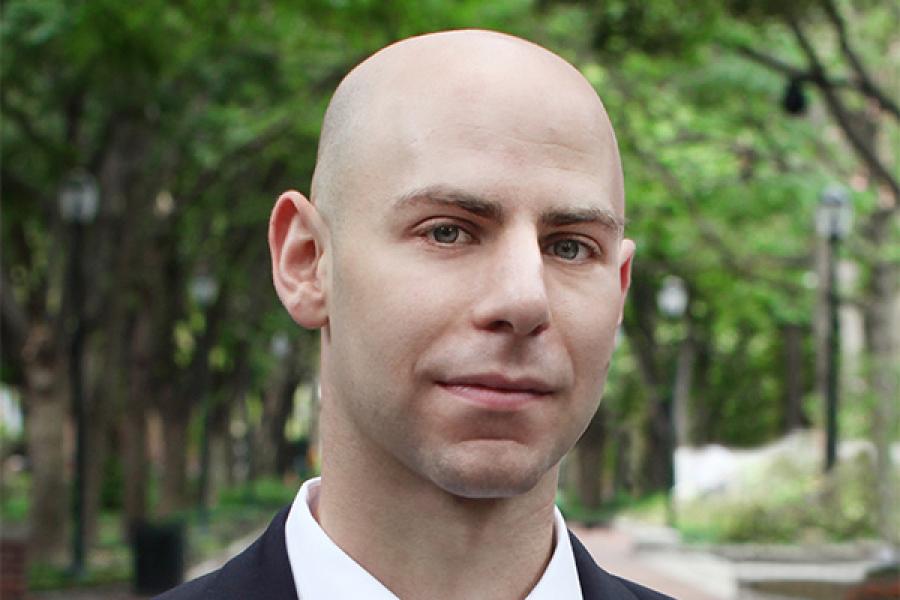
Givers, Takers or Matchers: Who are most likely to succeed at the workplace?
'Givers' can be too self-sacrificing; 'Takers' can be dominating. Wharton professor and author Adam Grant talks about the differences between various personality types
Q. You believe that every time we interact with someone at work, we make choices around ‘reciprocity’. Describe how Givers and Takers differ in their behaviour.
Takers view interactions as a way of extracting value from other people and approach people with a mindset of, ‘How can I get as much as possible from this exchange?’ At the other end of the spectrum, Givers come to an interaction trying to figure out, ‘What can I contribute here? How can I add value?’ That usually means looking for ways to be helpful, without and strings attached. It might involve sharing knowledge, providing mentoring, making introductions, or just showing up early or staying late to help a colleague out.
Q. You have found that there is a third type of ‘reciprocity style’: Matchers. Please describe them.
In the majority of our interactions, most of us operate by the principal of matching. If you’re a Matcher by default, your instinct is to try to maintain an even balance of give-and-take in your interactions. You try to keep fairness and a sense of quid pro quo in your dealings with others. If you do someone a favour, you expect an equal one in return.
Q. Who is most likely to end up at the top of the success ladder: Takers, Givers or Matchers?
This surprises many people: it’s the Givers. But interestingly, they are also most likely to sink to the bottom—and I love that paradox. Let’s talk first about the Givers who don’t succeed. This happens because they are too self-sacrificing, to the point of becoming doormats. They try to help out all of the people all of the time, putting others’ interests so far ahead of their own that they often burn out. While successful Givers also put other people’s interests first, they don’t do so to their own detriment. Their stance is more like being on an airplane and securing their own oxygen mask before coming to the assistance of others.
Successful Givers proactively block out windows of time to get their own work done, then dedicate separate periods to be helpful to others. Also, instead of being ‘generalists’ in helping people with any request that comes up, they are more like specialists: they find ways to help that they are uniquely good at, and enjoy. This way, the act of giving is energizing to them rather than distracting and exhausting.
In their interactions, successful Givers look for ways to expand the ‘pie’, so that everybody around them can be better off. Part of what makes them so successful is that they find greater meaning and purpose in their work because they feel that they truly make a difference. They make it clear that their colleagues really matter to them, and as a result, they end up building deep and broad relationships with people who often become sources of creative ideas and opening doors to new opportunities.
Q. Each year, companies spend billions of dollars assessing and evaluating talent, but you believe that this approach is fatally flawed. Please explain.
The war for talent tends to focus on finding people with ‘raw ability’. Yet wonderful books—like Mindset by Stanford’s Carol Dweck and The Talent Code by Daniel Coyle—have shown that talent isn’t just born: it is also learned, honed and developed.
The Taker mindset is, ‘I’m going to hire the best talent possible so that I win and everybody else loses’; and failed Givers are the ones who promote talent in a way that they themselves lose out. Successful Givers try to promote talent, so that it’s a win-win for all. They spend time and effort figuring out how to bring you to the best of your ability, and they do this in a way that’s good for the organization and for them.
In one major study, Benjamin Bloom and his colleagues tracked world class athletes, musicians and chess players, among others. He found that the vast majority of them were not that special in their early lives: they didn’t win all their competitions; they didn’t have the fastest times as swimmers or the best track record as tennis players; they weren’t playing Carnegie Hall by age seven. Basically, they just seemed to be average. The question was, how did they become so great?
In his book Outliers, Malcolm Gladwell showed us that a major factor in success is deliberate practice—that highly successful people have to put in a certain number of hours (around 10,000) to master their skill. But what motivates people to become so dedicated in the first place? Bloom found that they often had a first teacher or coach who made the activity fun for them. In my opinion, those coaches and teachers were all Givers. They might have said to their young student, ‘Look, I’m not going to sit you down and make you drill away at the piano for hours; instead, I’m going to make a game out of this, so that you really enjoy music and you become intrinsically motivated. As a result, you will put in the time and energy and practice required to develop this skill’.
That’s an example of how Givers think about talent differently. They look for the potential in everyone, and they set challenging goals for the people they work with. As a result, they tend to uncover ‘diamonds in the rough’, and more often than not, they’re able to bring these people to higher levels of potential than anyone thought possible.
Q. Tell us a bit about ‘powerless communication’, and why it is so powerful.
Powerless communication entails communicating in such a way that either makes others more powerful than you, or raises your own level of weakness and vulnerability. There are lots of ways to do this: it might involve speaking tentatively and expressing doubts about your ideas or your expertise; asking people questions, instead of giving answers; and seeking advice instead of telling people what to do. It might also involve admitting the times you’ve made mistakes or weren’t as successful as you’d hoped.
In many cases, people think this type of communication is dangerous, because it essentially exposes the ‘chinks’ in your armour. But the research in this area shows that whenever you work interdependently with others, the first thing they consider is, Does this person care about my interests? At the outset, people are trying to figure out whether you are going to try to take from them or give to them. When we communicate powerlessly—when we hesitate, reveal our weaknesses or share doubt—it actually signals that we are concerned about others and that we’re willing to, if not defer to them, at least give their ideas and goals some consideration. It becomes a signal that we are Givers, and when you’re working with people in a team, they are much more likely to listen to you once you’ve been human and open with them by communicating powerlessly.
Q. Research shows that there are two traditional paths to influence: dominance and prestige. How do these paths apply to Givers and Takers?
Takers tend to pursue the dominance path: they try to earn respect and influence by being assertive, controlling things and sort of conveying that they are superior to others. This approach can work well, if you don’t have to depend on other people, collaborate with them or serve them. But as soon as you shift to an interactive scenario, the Giver’s approach is much more effective. It says, ‘Look, I don’t have to be better than you or more powerful than you in order to earn your trust or for you to see me as somebody who’s competent and worthy of respect’. Givers see status as less much than a zero-sum game, and they recognize that they can earn respect by helping people as opposed to controlling them.
Givers vs. Takers
Takers favour the values in List 1, while givers prioritize the values in List 2.
List 1
• Wealth (money, material possessions)
• Power (dominance, control over others)
• Pleasure (enjoying life)
• Winning (doing better than others)
List 2
• Helpfulness (working for the well-being of others)
• Responsibility (being dependable)
• Social justice (caring for the disadvantages)
• Compassion (responding to the needs of others)
Psychologist Shalom Schwartz found that ‘giver values’ are the number one guiding principle in life for most people in most of the 70 countries he studied—from Argentina to Armenia, Belgium to Brazil, Slovakia to Singapore.
Adam Grant is the Class of 1965 Professor of Management and Psychology at the Wharton School of Business and a Fellow at the Rotman School’s Martin Prosperity Institute. He is the author of Give and Take: A revolutionary Approach to Success (Viking, 2013).
[This article has been reprinted, with permission, from Rotman Management , the magazine of the University of Toronto’s Rotman School of Management]
[This article has been reprinted, with permission, from Rotman Management, the magazine of the University of Toronto's Rotman School of Management]















